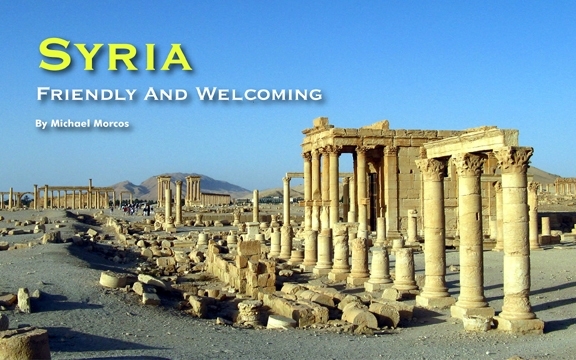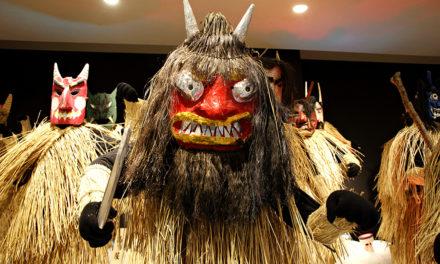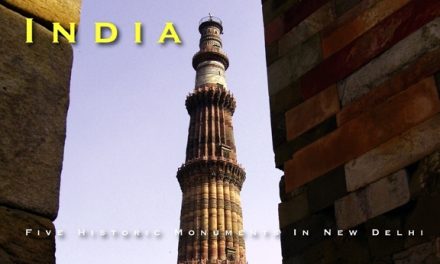Syria
Friendly And Welcoming
by Michael Morcos 
Syria, “you’ll love it!” That’s what people who had visited had said to me about this middle-eastern country. After travelling there for a week I knew exactly what they meant. I found some of the friendliest welcoming people I had ever met while travelling. Add to this fantastic food, great weather, thousands of years of history, beautiful landscapes and several World heritage sites and it makes for a most memorable visit.
Old city of Aleppo
Our trip would start in the northern Syrian city of Aleppo which is one of the oldest continuously inhabited cities in the world as well as Syria’s most populated with over two million inhabitants.
The city’s significance in history is its location, once having been on an important trading route. It is situated at the end of the Silk Road, which passed from China on through all of Asia. Aleppo’s importance started dwindling when the Suez Canal was opened in the 19th century and goods started being transported by sea. Its spirit as a trading region is still alive and well in the streets and sueks.
Aleppo Citadel
The Aleppo Citadel is the city’s centrepiece. The hill it is built on what has been inhabited since the third century B.C. The large medieval fortified palace in the centre of this old city has been conquered by many nations including the Greeks, Romans, Byzantines, Ottomans, and Arabs and as of the last century the French, each leaving their mark. It would be hard to visit Aleppo without noticing it, as it is enormous in size.
Christianity in Syria
Our trip brought us to many holy Christian places. For many centuries the main religion of what is now Syria was Christianity. This was until the Muslims brought Islam to the newly conquered area. However, Christian practitioners do have their churches and are able to freely practice their faith in what is today a predominantly Muslim nation.
Church of Saint Simon
The Church of St. Simon is 60 Km away from any city. It was on this spot that he preached twice a day to followers from near and far. He joined a monastery in this area, but soon thereafter chose to live his religious life alone as a hermit monk, living on a pillar.
Within just a few decades a vast shrine was built in Simon’s honour on this site. It consisted of four basilicas from the sides of a central octagon, within which was enshrined the famous pillar.
First Alphabet
Syria is known to have the first recorded Alphabet. The Ugaritic language was discovered by French archaeologists in 1928, and used only in the form of writings found in the lost city of Ugarit. Ugarit was an ancient port city in the eastern Mediterranean in northern Syria.
Saladin’s Castle
Saladin was a great Muslim leader and cultural figure with Kurds, Arabs and Muslims. His chivalrous behaviour was noted by Christian chroniclers including Richard the Lionheart. At the height of his power, he ruled over Egypt, Syria, Mesopotamia, Hejaz, and Yemen.
The Saladin castle is perched high on top of a hill 30 km east of Lattakia between two deep ravines, surrounded by forest. Built in ancient times by the Phoenicians it changed hands many times, lastly by Saladin.
Palmyra
Palmyra was an important and ancient Syrian city in the middle of the desert by an oasis. The archaeological ruins run in every direction and show the magnitude of importance of this once thriving metropolis. It had long been a vital caravan city for travellers crossing the Syrian Desert. Today the site is over-run by tourists while the newer development sits adjacent to the old site.
The Romans eventually conquered Palmyra and incorporated many of their advanced architectural styles but not before destroying a large portion of the city. As in so many parts of Syria, this site was conquered by several nations. Today, you can find an abundance of Palmyra art in British museums.
Town of Maalula
Maalula means “the entrance” in Aramaic. It refers to its dramatic location at the entrance of a rocky gorge. The town of Maalula is a predominantly Christian village with a small population of roughly 2,000. It is the home of two ancient Christian monasteries: Saint Sergius and Saint Takla.
Built in the 4th century the Greek Catholic monastery of St. Sergius is one of the oldest in Christendom and is tended by nuns. In the village is the Greek Orthodox monastery of St. Takla. This religious monument receives an unending stream of Christian and Muslim pilgrims.
Crak des Chevaliers
Crak des Chevaliers is a Crusader castle approximately 40 km west of the city of Homs and one of the most important preserved medieval military castles in the world. In 2006 the castle and site were given World Heritage Site status by UNESCO. The impressive historic structure will take time to visit and is well worth it.
Capital city
Damascus is the capital of Syria and its’ second largest city. In addition to being the oldest continuously inhabited city in the world, Damascus is a major cultural and religious centre of the Levant. Greater Damascus has a population of 2.4 million people and experiences a semi-arid climate. Today, it is the seat of the central government and all of the ministries.
Souk Al Hamidiyeh
There are many open air markets in Damascus, souks as they are called in the Arab world. Located in the old city, Souk al Hamidiyeh is the most important one and probably the most visited by locals and tourists. It runs 500 meters from east to west and ends at the ruins of the temple of Jupiter before the Umayyad mosque. Most of the souk is covered over with high iron struts and metal roofing.
These bazaars are the equivalent of our malls only far, far older. One can find just about anything from clothes and food items to furniture and gift ideas, all in a festive atmosphere.
Umayyad Mosque
The Grand Mosque of Damascus is located in the old part of the city. Also known as the Umayyad Mosque it is one of the largest and oldest mosques in the world and is considered the fourth holiest place in for Muslims.
On the spot where the mosque now stands was a temple of Had ad in the Aramaean era. The site was later used for the Temple of Jupiter in the Roman era, and then a Christian church dedicated to John the Baptist in the Byzantine era.
Khan As’ad Pasha
Situated along Al-Buzuriyah Souk, Khan As’ad Pasha has been described as one of the finest khans (inns) of Damascus, and the most “ambitious” work of architecture in the city. Throughout the Ottoman era, it hosted caravans coming from Baghdad, Aleppo, Beirut and elsewhere in the Middle East. Today, it is designated as a tourist site and hosts the Natural History Museum of Damascus.
Syria the unforgettable
There is so much to see and do and simply not enough time to see and do it all. That is always the case when visiting interesting destinations. A week in Syria is barely enough time to discover its’ many hidden gems. This is a country that offers visitors the best of many worlds. There are the sunny Mediterranean Sea resorts, the fascinating deserts, cosmopolitan cities, plenty of history and historical sites, fantastic cuisine and last and most importantly the very friendly people that make Syria so special.





